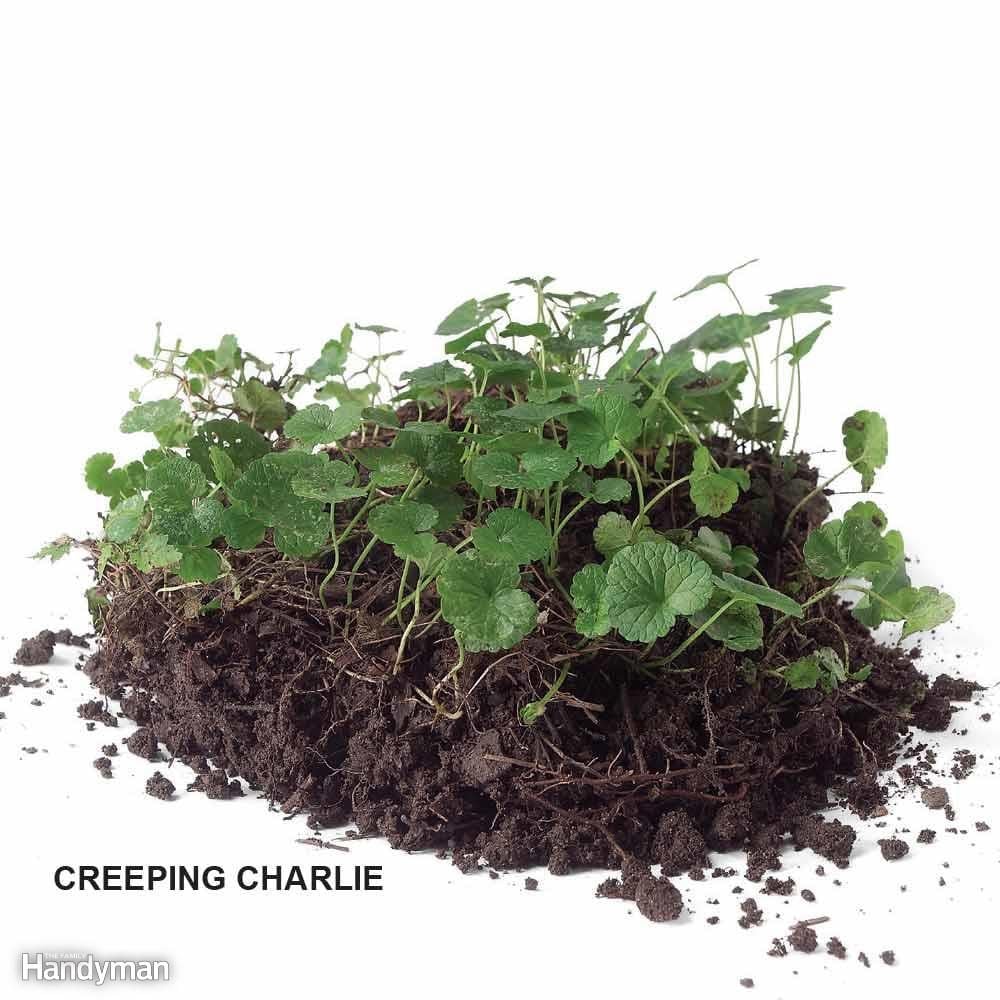
Identify Weeds Before Planning the Attack
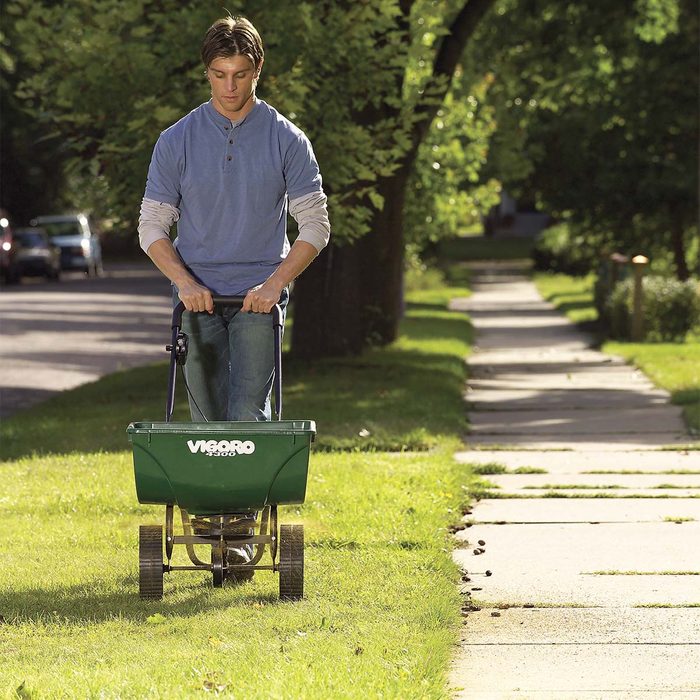
Prevent Broadleaf Buggers
A broadleaf weed is any undesirable lawn plant that isn’t a grass. Dandelions, plantain, ground ivy (creeping charlie) and ragweed are a few of the most common broadleaf weeds. Before broadleaf weeds start growing in the spring, apply a product called Hi-Yield Turf & Ornamental Weed & Grass Stopper Containing Dimension, which is a preemergent herbicide. It kills weeds before they sprout from seed and even kills some weeds that have just started to grow. Park your broadcast spreader over a tarp or on the driveway (grains may leak out, and a heavy dose of herbicide on the yard can kill even healthy grass). Fill the spreader and distribute the herbicide evenly over your lawn between your first and third mowings in the spring. The company says a single application will last a full 120-day season. It’s available at lawn and garden centers (call first to make sure). A 35-lb. bag treats up to 15,000 sq. ft.
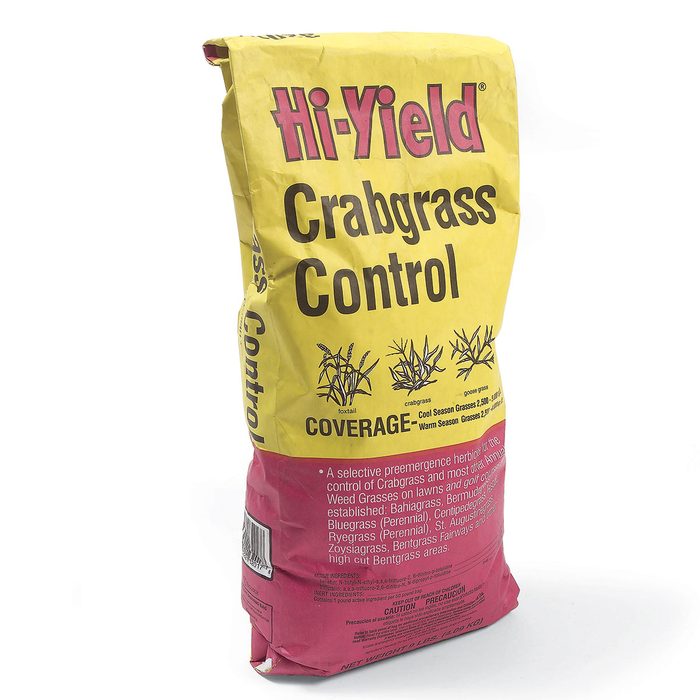
Nail Crabgrass Before It Starts
The easiest way to stop crabgrass is to stop it before it starts growing. Apply a preemergent herbicide after your second mowing in the spring. Crabgrass grows from seeds scattered in previous years. The herbicide keeps those seeds from germinating. The seeds may remain viable for several years, so it’s best to apply herbicide every spring. One springtime application will vastly reduce the need to attack crabgrass later in the year once it has sprouted.
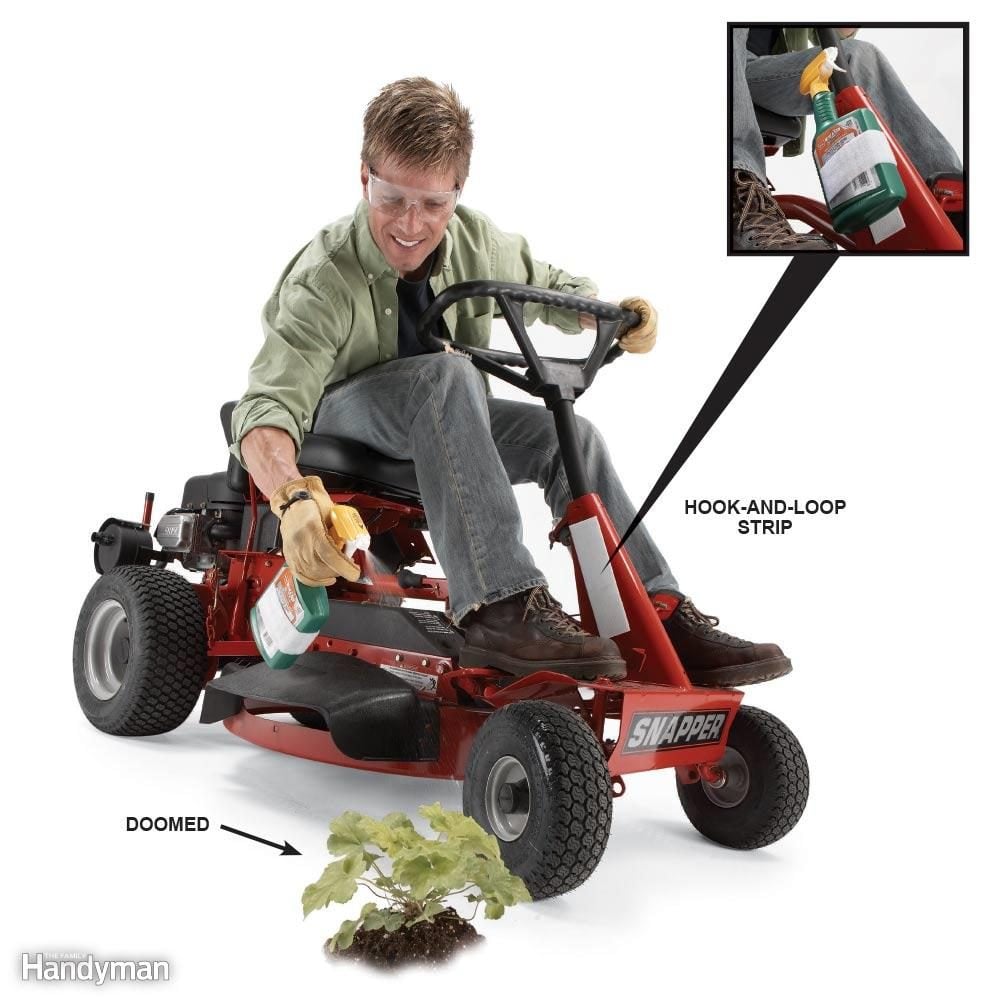
Drive-By Weeding
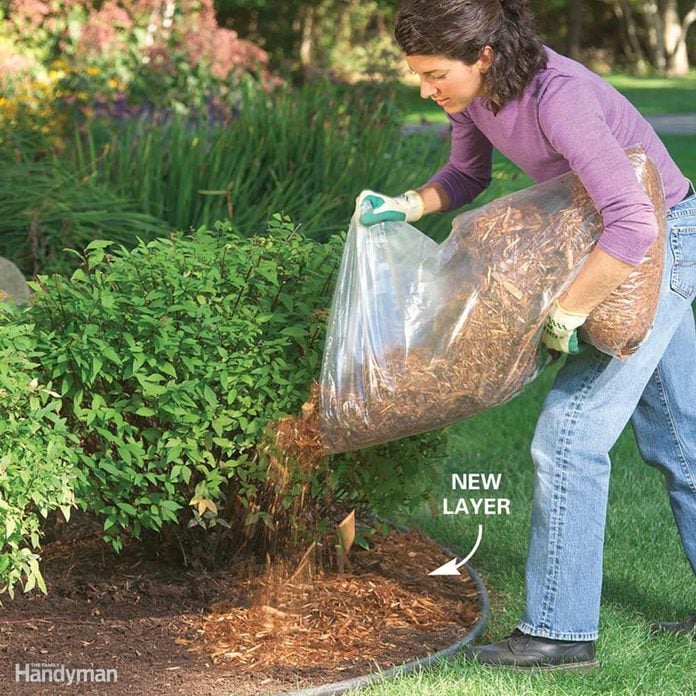
Mulch Helps in Garden Beds
Mulch won’t stop weeds completely. Applied deep enough, it will prevent many weed seeds already in the soil from germinating and growing. But it won’t stop weeds that have already rooted. Tough weeds like dandelions will push right through if you don’t dig them out first. And more weed seeds will blow in and take root in the mulch (in both organic and stone). All mulch-covered gardens require maintenance, though less than if you don’t use mulch.

Barriers are Even Better in Garden Beds
You have two good choices for the best weed barrier—organic mulch or high-quality landscape fabric. (Don’t use black plastic. It doesn’t allow rain to reach plant roots, and it traps water vapor, which facilitates the growth of mold and mildew.) An organic mulch such as shredded bark, in a layer several inches deep, will help control weeds. It will also decompose over time, which will add organic matter to the soil and make your tree happier. However, you’ll have to add more organic mulch every couple of years. Landscape fabric, when protected from sunlight, decomposes more slowly than organic mulch and doesn’t need to be replaced as often. However, the type of landscape fabric makes a difference. Hold the fabric up to the light and make sure the pores in the fabric are small enough to prevent weeds from growing through the barrier. Also, a good-quality landscape fabric is one you can’t tear or stretch easily. It should feel stiff, not flimsy and limp.
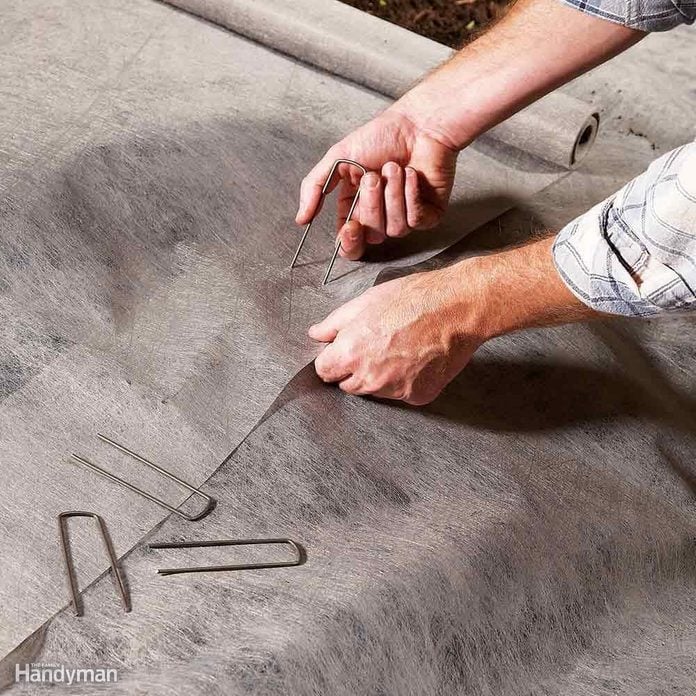
Always Overlap and Secure Barriers
The seams in landscape fabric in planting beds often open between sections. To solve the problem, use landscape fabric staples. You’ll find them right next to the fabric in stores. Make sure the edges of the fabric overlap by at least 3 in. And don’t skimp on the staples; place them about 16 in. apart. Also use staples to anchor landscape fabric around the perimeter. In hard soil, start the staples by hand and then push them in with your foot.
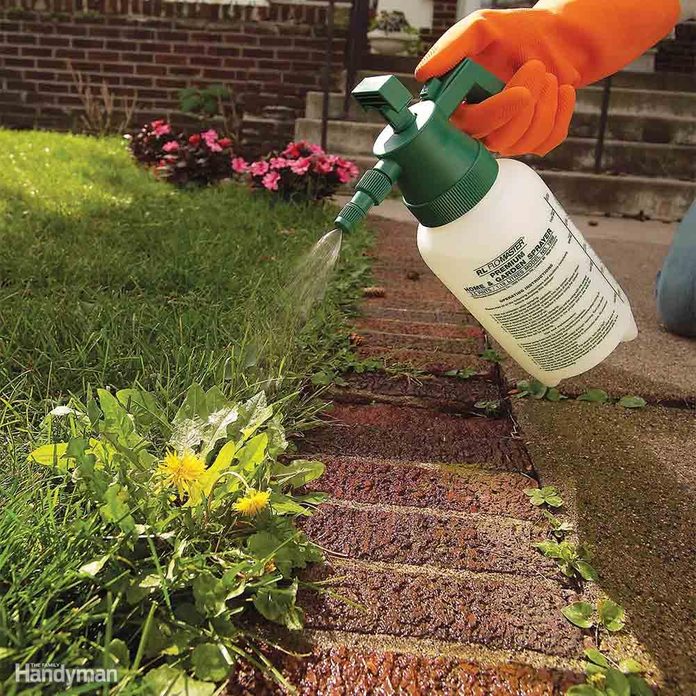
Spot-Kill Broadleaf Invaders
If a few broadleaf weeds pop up in the yard (you can always count on a few dandelions), spot-kill them with a post-emergence herbicide such as Ortho’s Weed-B-Gon MAX (a 32-oz. bottle of concentrate covers 16,000 sq. ft.). Look on the label for “broadleaf killer” then check to see which weeds it targets. Some broadleaf herbicides also kill crabgrass. There’s no need to treat the entire lawn, just the weedy areas. Don’t let them spread and create a bigger problem. Premixed herbicides are OK if you have a small lawn and only a few weeds. Otherwise, buy concentrates to mix yourself—they’re a better value. Wait until the temperature is between 60 and 85 degrees F. Mix the herbicide with water (follow the directions) and pour it into a small pump sprayer. Keep the nozzle 6 to 12 in. from the weed and spray until the leaves are slightly wet.
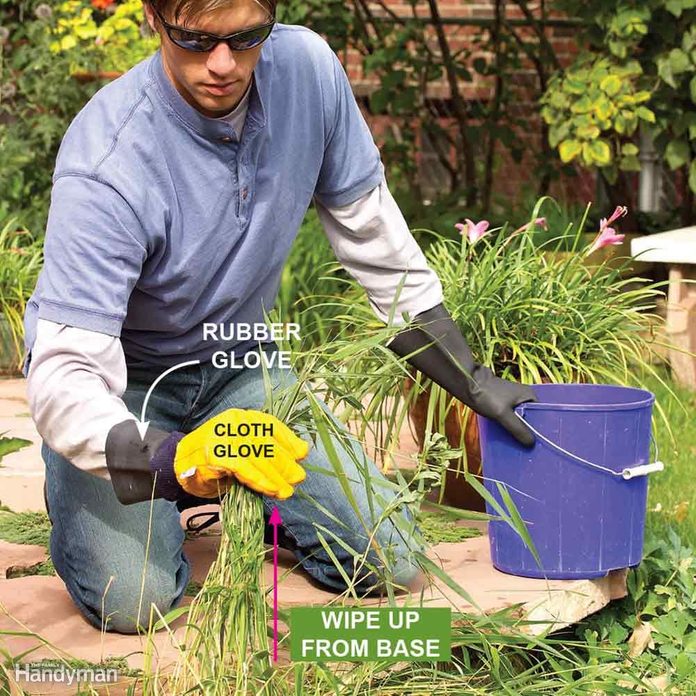
Banish Growing Quack Grass
Quack grass is the widest spread example of a perennial grass that comes back year after year just like your lawn. It spreads through seeds and extensive underground root systems and is unaffected by broadleaf killers. Pulling grassy weeds only gets some of the roots, and the remaining ones will quickly sprout new plants. The best way to kill these weeds while protecting surrounding plants is by wiping the grass blades with a nonselective herbicide like Super Kills-All or Roundup. Wear a cheap cloth glove over a plastic or rubber chemically resistant (they’re labeled as such) glove to protect your skin. Dip your gloved hand into the herbicide and then simply grab the blades near the base and pull the herbicide over the grass blades. Don’t worry about coating every single blade. The chemical will absorb into the plant, make its way down to the roots and kill the entire plant. Most will die in a few days, but survivors may need more treatments.
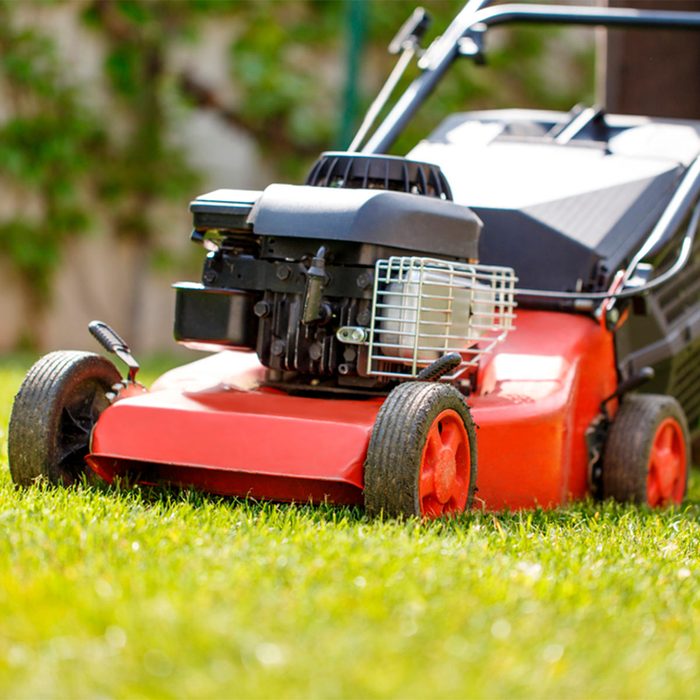
Cut Grass to the Right Height
Cutting grass too short weakens it. Longer grass grows stronger and thicker and crowds out weeds. Weed seeds can’t germinate easily since they don’t get much light. Established weeds have a tougher time competing with the surrounding turf.
Each type of grass has an ideal mowing height to maintain its health and thickness. It’s about 2-1/2 in. for most cold-climate species. Cut most warm-climate grasses a bit shorter: 1-1/2 to 2 in. If you’re not sure of your grass type, take a sample to a local nursery. Or type ‘identify grass’ into an online search engine for help. Although most lawns contain a mix of grass types, they should have similar ideal cutting heights.
Here’s another reason why your shouldn’t mow your grass too short.
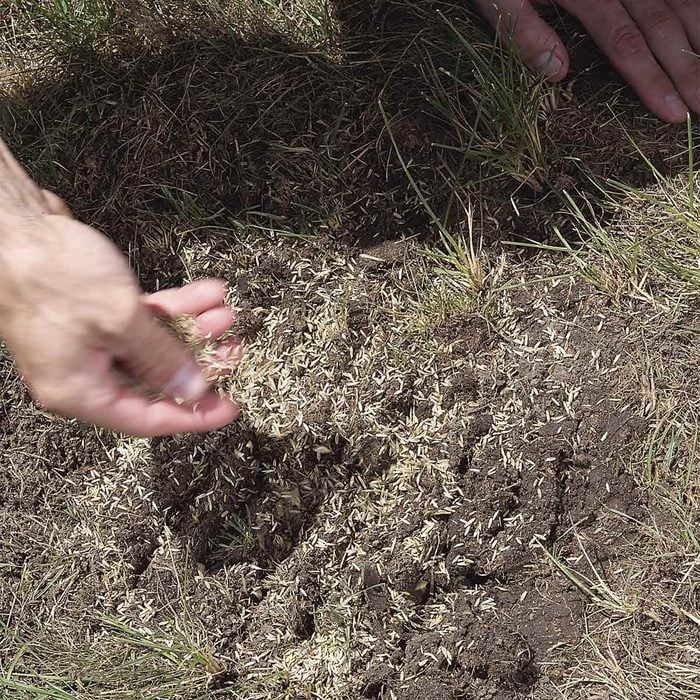
Reseed Bare Patches
Keep weeds off of bare patches by reseeding. Toss grass seeds into the patch and keep the soil moist to the touch until the grass becomes established. Mow the new grass when it’s 3-1/2 to 4 in. high.

Perennial Grassy Problems
Once there are too many weeds to spot-treat by hand, it’s time for draconian measures. Kill everything and start over. Spray a nonselective herbicide on the weedy area and wait two weeks. If they’re not dead, spray them again. Once the weeds are dead, mow them as short as possible. After spraying the herbicide, wait 14 days to plant new grass so the herbicide won’t kill it.
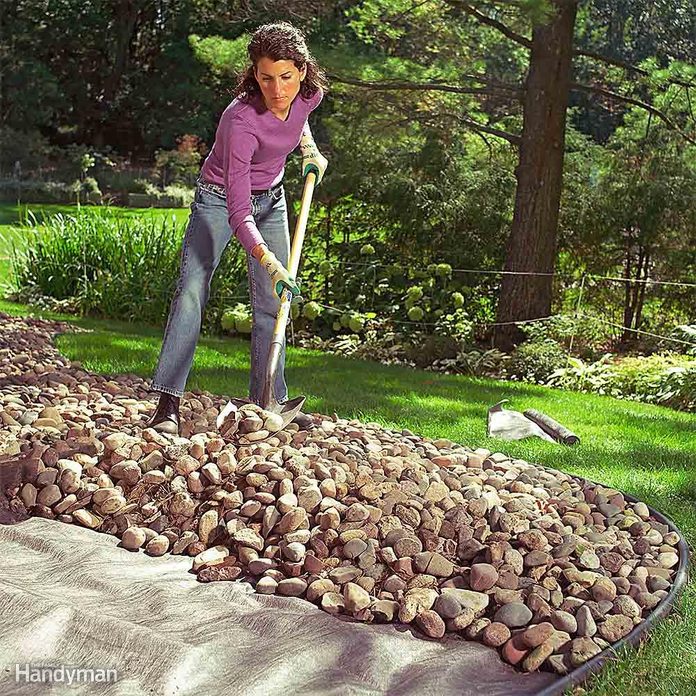
Don’t Forget Rock Beds
Poor light or soil conditions can make it all but impossible to grow grass in some areas. If you’ve tried more than once to nurture grass in an area and failed, it might be time to throw in the towel and treat the area with a landscaping alternative. The obvious choices are stone, mulch and attractive ground cover plants that tolerate the conditions grass can’t handle. Kill any weeds with a nonselective herbicide (re-treat survivors after 10 days). The herbicide will break down within two weeks and the ground will be safe for new plants.
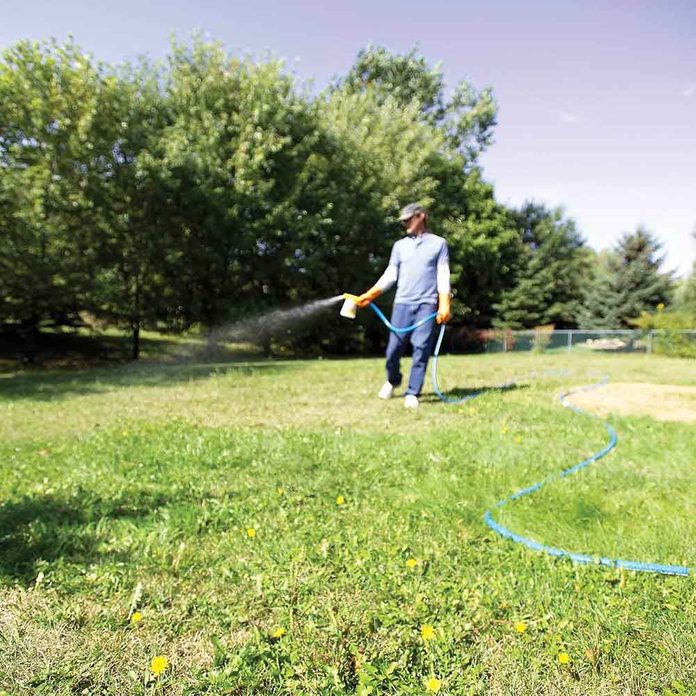
Whole Yard Solution
Use a hose-end sprayer to kill a yard full of weeds. It’s faster and more effective to dispense concentrated liquid broadleaf killers than to use granular broadleaf killers. You just add the herbicide, dial in the right concentration on the sprayer lid and walk around the yard and mist all the weeds. You can treat an average yard in less than 20 minutes.

